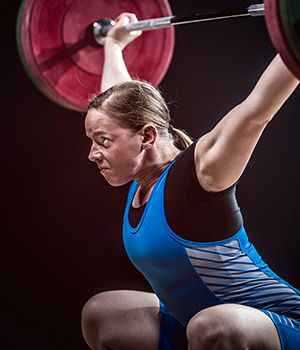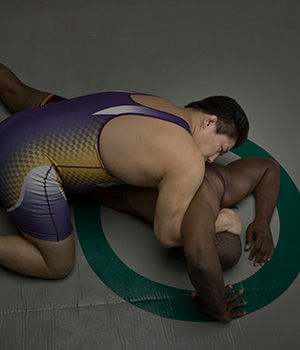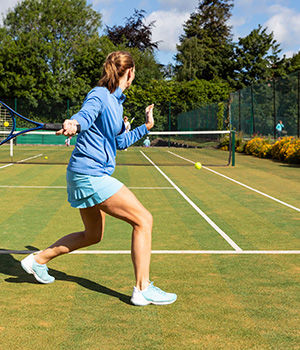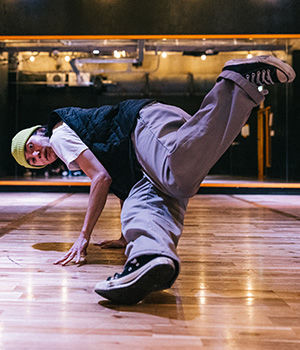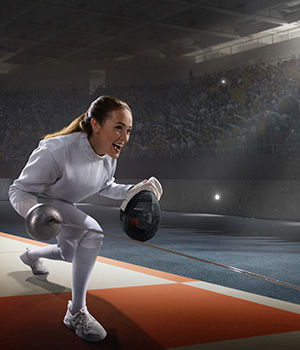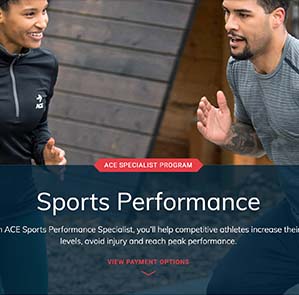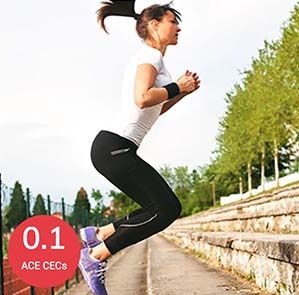Train Like an Olympian: Two TRX Muscular Training Workouts

Feeling inspired after watching the best athletes in the world compete on the biggest stage? It’s not too early to start preparing your clients for the 2028 Los Angeles games. Now, the TRX Suspension Trainer might not have your clients ready to compete at a world-class level in flag football, weightlifting, marathon swimming or the brand new Olympic sport of breaking (i.e., breakdancing) in four years, but it can certainly help them develop mobility and stability, muscular strength and endurance, and, when included as part of a circuit-training routine, the cardiorespiratory fitness needed to play recreational sports on the weekends, build muscular strength and size, and go for an invigorating swim at the local YMCA.
To be honest, we’re not entirely sure how to get good at breaking, but some coordination and agility training probably wouldn’t hurt. We’ll leave that for another article.
The TRX is a versatile piece of equipment that uses the exerciser’s body weight to engage multiple muscle groups simultaneously while enhancing functional strength, mobility and stability, balance, flexibility and core stability. One of the primary benefits of the TRX is its portability and the ability to use it anywhere, from your home office to a hotel room or even a local park. An additional benefit is that you can train the entire body with one piece of equipment and easily transition from one exercise to the next and between intensities by moving your body position in relation to the point of attachment or using one of the other strategies discussed below.
While the TRX is justifiably touted for its ability to create a wide variety of functional movements, it can also be used to develop muscular strength and endurance, which is the focus of the workouts presented below. In addition to traditional ways to increase exercise intensity (e.g., increasing the range of motion, increasing the number of sets or repetitions, decreasing recovery time between sets, adding plyometrics), there are several ways to increase the challenge of exercises that are specific to the TRX:
Adjust the body angle: This is the primary means by which an exerciser can make movements more challenging when using the TRX. Moving the feet closer to the anchor point increases the percentage of the body weight being lifted. Imagine progressing a client from a wall push-up to an incline push-up to a classic push-up and you’ll see how changing the angle increases the intensity.
Perform single-limb exercises: Progressing from rows and squats to single-arm rows and single-leg squats, for example, is a great way to add more resistance while also increasing the work of the core and stabilizer muscles.
Reduce the base of support: Bringing the feet closer together or performing exercises like push-ups or planks on one foot adds a balance component to any exercise.
Combine movements: The TRX enables you to combine exercises in a way that free weights or weight machines don’t allow. For example, you might have a client combine a suspended push-up and suspended knee tuck exercise into one smooth compound movement that challenges multiple muscle groups. Or you might pair exercises targeting the same or opposing muscle groups to be performed consecutively without rest for compound and supersets.
Wear a weighted vest: Adding this external resistance will make every movement more challenging without the need to modify a client’s workout. When adding additional weight, be sure the client can first comfortably perform the movement with proper form using their own body weight for the desired number of repetitions.
To learn more about the evidence supporting the efficacy of the TRX, check out ACE Sponsored Research: Investigating the Acute and Chronic Health Benefits of TRX Suspension Training. And, to hear from the inventor about what inspired him and to see a sample workout, watch the video below.
The Olympics-inspired Workouts
As a health and exercise professional, you can use events like the Olympics to get creative with your exercise programming and cueing. For example, you might say, “As you perform this last set of squat jumps, imagine it’s game point in a volleyball match and you’re trying to spike the winning point,” or “As you perform these back rows, imagine your boat slicing through the water for the gold!” This can bring a much-needed sense of fun to tough workouts.
For these workouts, have the client work from left to right and perform one set of each exercise (this is round 1) before starting over for round 2. They will complete a total of three rounds during each workout, performing six or fewer repetitions of each exercise to emphasize muscular strength, or 12 or more repetitions to emphasize muscular endurance.
Remind clients that the key is to match their intensity with the number of repetitions they perform. So, if the desired repetition range is 12 or more and they can do only eight repetitions of a particular exercise, then they would need to adjust their foot placement in relation to the anchor point so that they are moving a lower percentage of their body weight. Another option might be to widen their base of support to reduce the intensity of the movement. The goal is to find the intensity where they can achieve only the desired number of repetitions to meet their goal. If a client wants to increase both muscular strength and endurance, they can perform eight to 15 repetitions of each exercise to target muscular fitness.
A full-body muscular training workout can be completed on three nonconsecutive days per week. Note that these workouts were created using the Function section of the ACE Workout Builder Tool.
Workout 1
|
Bend-and-Lift (Lower Body) |
Pushing (Upper Body) |
Single-leg (Lower Body) |
Pulling (Upper Body) |
Rotation (Torso/Core) |
|
|
|
|
|
|
Workout 2
|
Bend-and-Lift (Lower Body) |
Pushing (Upper Body) |
Single-leg (Lower Body) |
Pulling (Upper Body) |
Rotation (Torso/Core) |
|
|
|
|
|
|
Final Thoughts
The TRX is a wonderfully versatile piece of equipment and a great addition to any professional’s toolbox. In addition to reviewing the TRX section of the ACE Exercise Library and the various articles linked above, use your understanding of exercise science principles to choose the best movements for each client. Remember, an exercise doesn’t have to be unique or complex to work—the tried-and-true exercises have hung around for a reason. That said, you can also get creative in developing supersets and compound sets to increase the intensity of your clients’ workouts.
The options are truly endless and enough to make your head spin, which brings us back to breakdancing. We’ll let you figure out how to train for that move!
Expand Your Knowledge
Looking for more information on how to effectively design training programs for your clients? Here are some great resources that also offer opportunities to earn the continuing education credits (CECs) you need to renew your certification.
ACE Sports Performance Specialist Program
Launch your career in this high demand field by becoming an ACE Sports Performance Specialist. Whether you are considering a full sports performance certification in the future or want to learn how to modify your training approach for your current performance-focused clients, you'll discover the skills, techniques and insights to help athletes gain strength, agility and the ability to perform at their peak during competition.
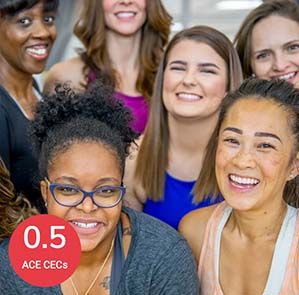
Whether you’re looking to enhance your program design for women or understand the nuances of motivating this population, this course will help you level up your skills by covering the practical knowledge you need when working with women. Learn from five industry experts speaking from their unique expertise about the physiological, biomechanical, and behavioral aspects of coaching and training women—a group that accounts for more than 50% of gymgoers. according to the 2020 IHRSA Global Report. Refine your coaching expertise, expand your reach and move your career forward.
Athletic Performance for Sport and Life
True athletic performance is more than just movement based. It is a combination of athleticism, movement and character. Whether you are training for sport or training is your sport, you can increase your athletic performance by increasing the efficiency of functional movement patterns and energy systems. This recorded ACE LiveClass teach you how to perform at your highest level.
More Articles
- Certified™: September 2024
Body-weight Interval Training: Equipment Free and Highly Versatile
- Certified™: September 2024
Rethinking Ibuprofen: Important Considerations for Your Clients’ Health
Contributor
- Certified™: September 2024





